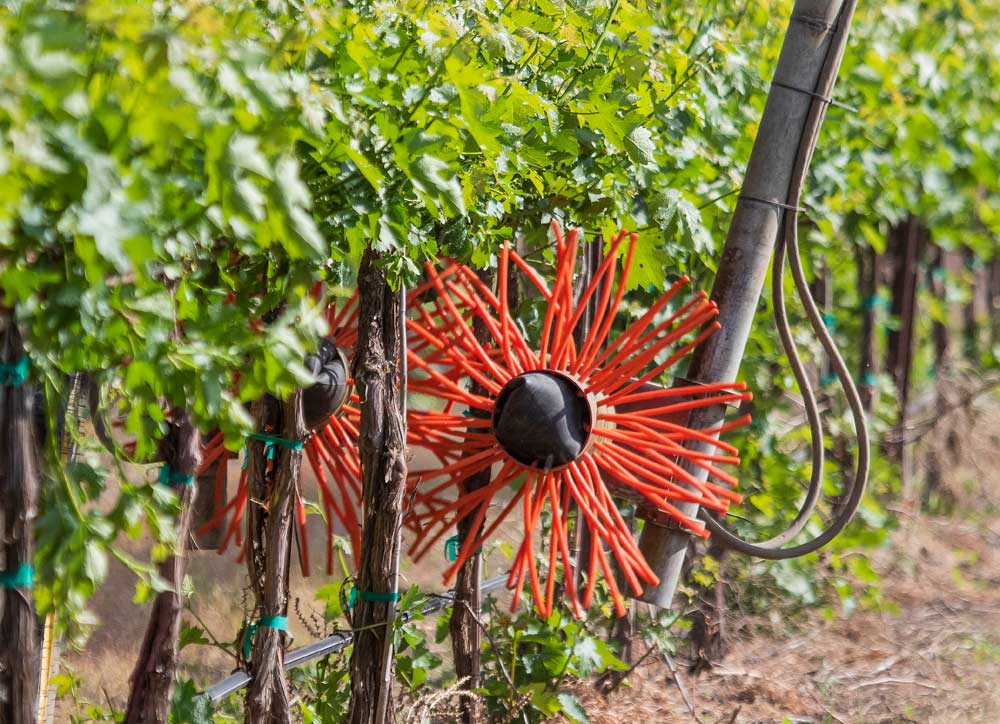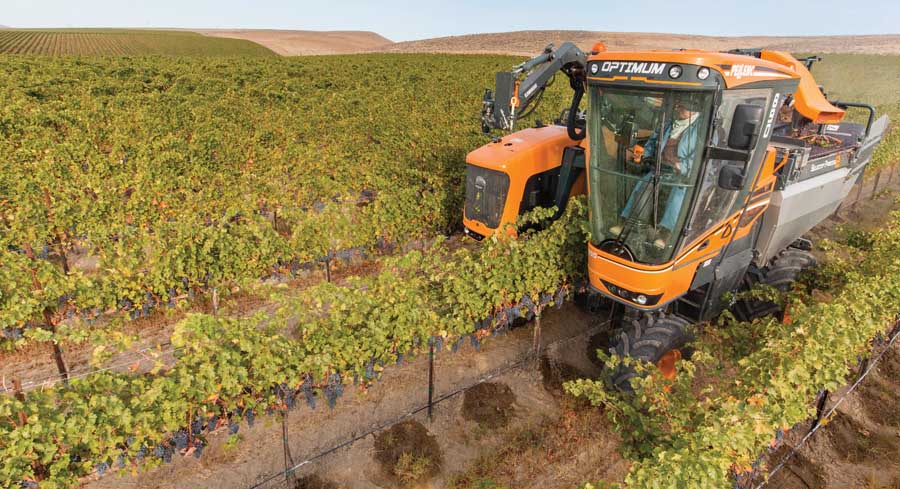Mechanized farming: a conversation with Steve Vierra of Derby Wine Estates
Farmers are always looking for ways to make their lives easier through technology and innovation. Who can blame them? Farming is a tough way to make a living and frankly there are some impressive toys out there.
Grape-growing tends to lag behind other crops in terms of mechanization. A lot of it has to do with consumer perception. When you swirl your 15$ glass of Sauvignon Blanc, you want to think of an elderly Frenchman with withered hands lovingly placing each cluster into a straw basket. The idea of his teenaged grandson ripping through the vineyard on a harvester and dumping them mice-and-all into giant hopper isn’t quite as romantic.
But labor costs are climbing and consumers aren’t so inclined to pay higher prices (shocker). But can you mechanize a vineyard without sacrificing quality?
I sat down with Steve Vierra, Director of Vineyard Operations at Derby Wine Estates in Paso Robles. Steve has been working with AV for well over a decade and over the course of that time, we’ve seen him go from a largely hand-farmed system to a mechanized one. Here’s what he had to say about it:
So Steve, how many acres would you say you farm mechanically?
Well the Laura’s vineyard (in East Paso) is around 278 acres planted and right now it’s probably around 70% farmed mechanically. Maybe even 80%.
And why did you decide to automate so many operations? What was the reasoning behind that?
Labor was a big issue: the availability of labor, the cost of labor, and the quality of labor that you get for the price. Then I considered the price point of the bottle that these grapes were going into. I felt that it was a good match for mechanically harvested fruit and that we could deliver, even over-deliver, on the desired quality level and keep our farming costs much lower.
How much would you say a bottle of wine coming from your Laura’s go for?
Sub-$20.
Do you see any of your mechanized blocks able to reach beyond that price point and say, go into a $50-dollar bottle of wine?
The new stuff for sure. The blocks I’m farming mechanically right now are old and I converted them, so they aren’t quite there on quality. For a sub-$20 bottle of wine it’s fine. The new stuff though, I’m developing specifically for mechanical farming with a high wire and a high drip. That could for-sure go into a high-end bottle.

How did you go about mechanizing your vineyard? What was the process?
It started with pre-pruning. I’d seen mechanical pre-pruners work and it just was a no-brainer. We were pruning everything by hand and with the pre-pruner you could just go through and shred all that residue right out of the wire. Then my guys only had six to ten inches or something to deal with. I thought, “Boy, can they fly!” So that was a winner for sure.
Later we started experimenting with box pruning, at that point we knew it would work. We knew the quality was out there. Now most of Laura’s is pruned that way: fully mechanical. It’s 90% at least.
Do you do any suckering mechanically?
No, at this point, I don’t. But that’s something that I’m looking at for the future. For the redeveloped stuff, the old stuff, we don’t need it that much just because it’s 25-years-old plus. The yields aren’t really crazy. This new stuff we may need to mechanically shoot thin because they’re so much more vigorous.
Mechanical bud-rubbers are pretty simple. I don’t know if it’s worth it for us right now but they’re on my mind.

Is your whole vineyard floor managed mechanically?
Yes. We use a Clemens weed knife and then just a berm disc. We’re constantly throwing a mound. We’ll bury weeds, then other times we’ll pull that mound away and cut the weeds. It’s kind of a throw-and-cut system, if you will.
Now Laura’s is on the East side of Paso, where it is quite dry. How do you handle weed control on your other vineyard in Cambria (near the coast)?
So at Derby West, we’re get like, 24 inches of rain. Weed pressure is a lot higher out there. We do mechanical weed-control there, but then it falls short. We have done it completely mechanically out there in dry years. The issue there is they can get well over 30 inches of rainfall, and we may not be able to get into the field in time to do those operations.
Do you do apply herbicides in that case?
We do one spray a year. We do a pre-emergent spray and that’s it. I’d like to get away from it.
Aside from weed-control, what would you say were some of the big challenges to automating? I remember when I first met you, you talked about using a mechanical harvester for fruit thinning, and it didn’t work out.
We tried that and I think it’s still possible to do it, but it didn’t work. It didn’t actually thin too much fruit. I mean, it thinned the right amount of fruit, but then the fruit that was left on the vine got damaged. It was just part of the learning curve on my end. I still think it’s possible. They’ve been doing it that way in the Central Valley, but they get huge yields there, so it really works out for them.
What phenological period were you in when you tried that?
Pea-sized, which was recommended. I think in retrospect, I think you’d be better off just doing mechanical shoot-thinning and you’d get the same effect.

What would you like to try out next?
Mechanical leafing definitely and bud-rubbing. I think you could get a machine that would do both. I for sure want to try out leafing. In East Paso it’s not necessary but for the coast, definitely on the Chardonnay and the Pinot. I’d also like to try it out before hand-harvesting just to clean up the fruit zone for the workers ahead of time. I think it would increase their production.
Most of your harvesting is also done mechanically, right?
If you look at pure acreage, yes, probably 70% 90%. The coast is still done by hand.
Do you get winemakers who still turn their nose up at mechanically harvested fruit?
Totally. But if you’re working with someone who’s open-minded to try it, they’ll see the potential for quality. The stigma is definitely holding some people back still.
What do you think of the new self-driving tractors that are coming out, like the Monarch? Could you see taking on something like that anytime soon?
No, probably not. Who knows what will happen in 20 years. For us, I don’t think so. It seems so new right now.
Well thank you so much for sharing your insight, Steve.
You’re welcome.

